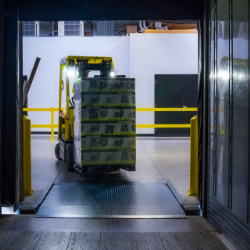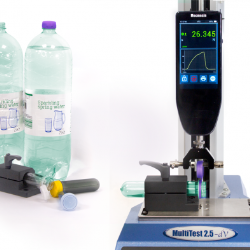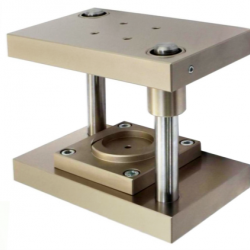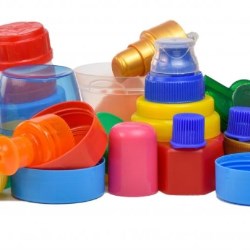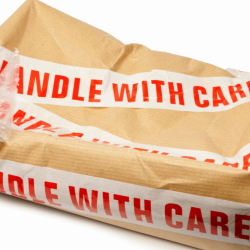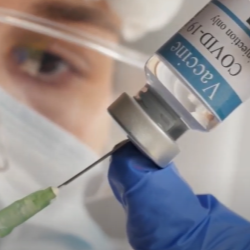Public
Mecmesin Catalog
Mecmesin Certificates
Mecmesin Documents
Mecmesin Locations
Mecmesin News
Mecmesin Videos
If this is your company, CONTACT US to activate Packbase™ software to build your portal.
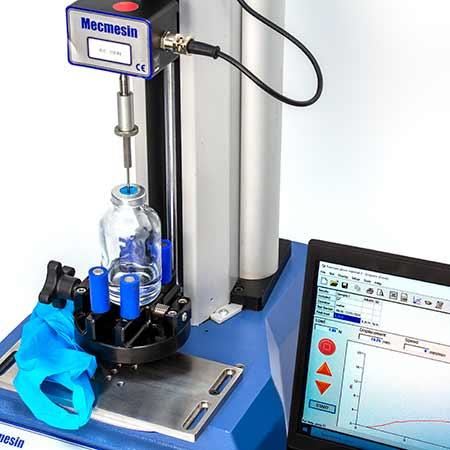

When selecting specialist gloves it is often the material strength and stretch which are the most important factors in determining quality and performance. These parameters will give you an indication whether a glove is at risk of tearing under your application conditions, whilst ensuring it still has adequate stretch to be comfortably fitted on the hand and provide the necessary feel.
Medical and cleanroom gloves made of latex, vinyl and nitrile are the subject of various test standards. ASTM D3577 and ISO 11193-1 cover rubber surgical gloves, D3578 covers rubber examination gloves; but each draws upon ASTM D412 for defining the method for tensile testing. This standard covers the measurement of tensile strength, tensile stress, yield point and ultimate elongation properties.
Tensile test methods for rubber and elastomers (ASTM D412)
Dumbell-shaped specimens are cut to a specific size according to the test method chosen. They are pulled at a constant speed (usually 500 mm/min or 1000 mm/min) until they break, and the tensile strength is measured in MPa together with the elongation expressed as a % of initial specimen length. The test is repeated on specimens which have been subject to an accelerated ageing process as per ASTM D3577 and D3578, which is designed to simulate how the glove may perform at the end of its rated shelf-life.
The minimum acceptable tensile strength values specified in the ASTM standards range, depending on the glove type, between 14 – 24 MPa with minimum elongation of 400 – 750%. When stored correctly in cool, dry areas away from sunlight, heat and humidity, many gloves will exhibit significantly better ‘strength and stretch’ characteristics, so it is common to see manufacturers utilise their tensile strength data to specify their products’ storage accordingly. When you consider that it requires typically 200-300% elongation to fit a glove comfortably on the hand, you should expect most gloves to stretch to around 700-1000% before failure.
Puncture resistance test of chemical-resistant gloves (ISO 374)
Gloves designed to provide chemical protection may only offer the defined level of protection for a limited time due to the glove material being adversely affected over time by the chemical hazard itself.
ISO 374-1 describes the method of testing the force required to puncture specimens of the glove material; with and without exposure to the chemical in question. A vial is used to support a specimen piece of the glove, whose outer surface has been treated with the challenge chemical, and held in place under an aluminium crimp-seal cap. Non-treated specimens of the glove are held in the same way. The probe, a cone-shaped stylus is then driven at 100 mm/min through each specimen to determine the peak force to puncture the glove.
The results are reported as a percentage degradation between the 2 sets of specimens as per EN 374-4. A positive percentage degradation indicates the material has become weaker after chemical exposure, which may increase the risk of the glove tearing when used. A negative percentage degradation indicates the materials has become harder and possibly brittle, which may make the glove less comfortable to wear and more liable to crack.
Mecmesin’s MultiTest 0.5-i tensile tester is the ideal choice as a versatile bench-top model capable of performing the full range of tensile and compressive tests. Its extended travel distance ensures the highly elastic rubber can be sufficiently stretched and its 500 N load rating easily covers the puncture resistance forces encountered. Pneumatically-operated plane grips provide efficient and repeatable gripping, the jaw faces reliable and consistently contacting the dumbbell samples under extensive deformation. The Emperor software of the MultiTest 0.5-i automatically calculated the various strength parameters for inclusion in the test report.
Test equipment
- MultiTest 0.5-i tensile and compression test system
- Loadcell ILC 500 N
- Lightweight pneumatic plane grips MEC94
- Puncture Resistance Jig with cone-point stylus
Caption: Puncture resistance test of protective glove material specimen to ISO 374

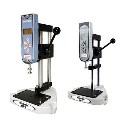
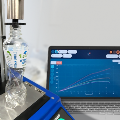
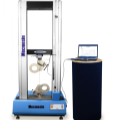
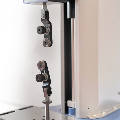
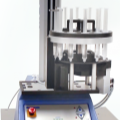
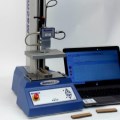
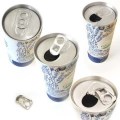
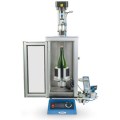
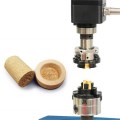
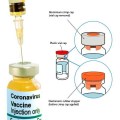
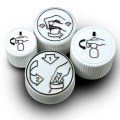

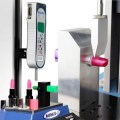
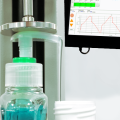
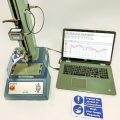
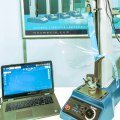
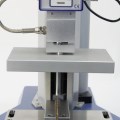
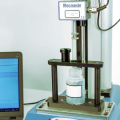

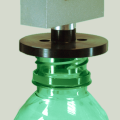
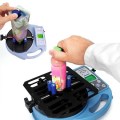
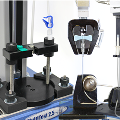

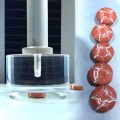
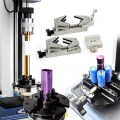

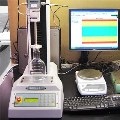
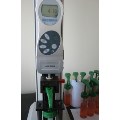
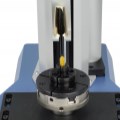
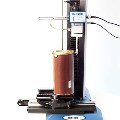
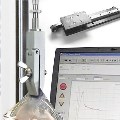
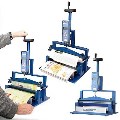

.jpg)
